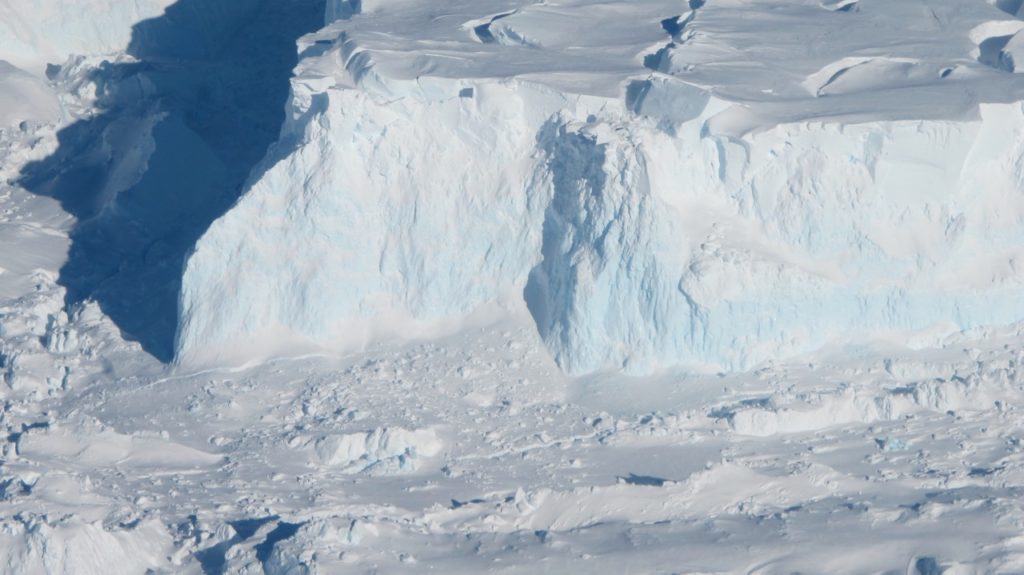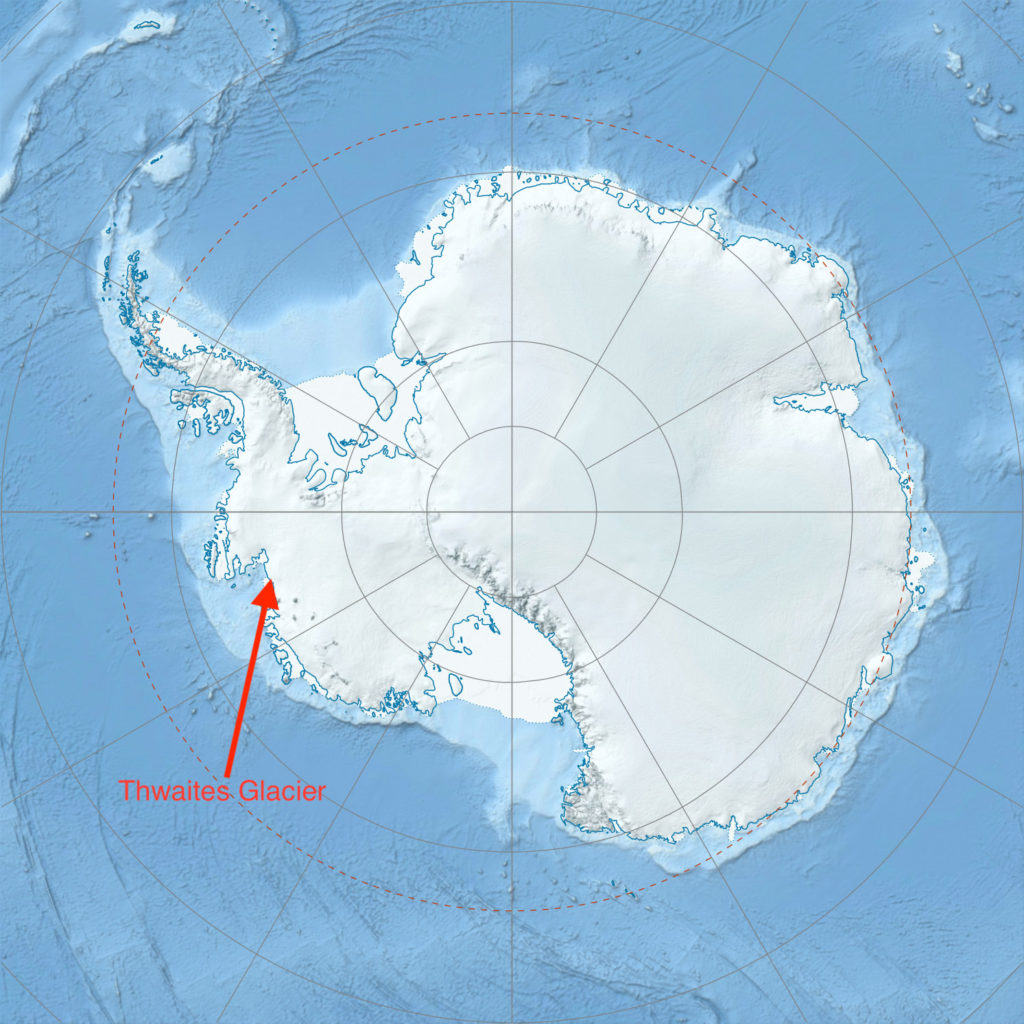
Imagining a better future in thirty years than the future we are heading for now, requires a major “Don’t’ Look Up” event that would cause a paradigm shift and result in a significant reversal in the current trends of ever-increasing income inequality, climate change disasters and corporate control of the political agenda. That event could come sooner than expected, as scientists are sounding the alarm about the impending collapse of the Thwaites glacier, which is the size of Great Britain, in Antarctica.

The aptly nicknamed 80 miles wide “doomsday glacier” is held back by a floating ice shelf that is rapidly destabilizing as shown, with cracks criss-crossing its surface. When it breaks apart, the glacier could slide into the ocean causing sea levels to rise upwards of 65 cm (two feet), which would then flood coastlines throughout the world. Although this event would be devastating, it would be exactly what is needed to move the climate crisis to the forefront for everyone, including those who deny climate change and those who continue to profit off the continued use of carbon fuels.
Once countries are faced with resettling millions of people, all other concerns will likely fade away as people unite to make the changes needed for both human survival and to tackle the climate crisis. All aspects of the economy and society will need to shift, as people realize that only by working cooperatively will the shift to decarbonization, greater income equality and true sustainability become possible.
Currently, Canada’s economy is mostly based on shipping out raw resources, while the majority of goods are produced in and shipped here from primarily the U.S. and Asia, with most profits flowing to often distant, corporate shareholders. If and when the world finally decarbonizes, the structure of the economy will need to change resulting in less reliance on world trade and greater self-sufficiency. One way to achieve this goal could be to tax goods according to how far they are shipped, to give an advantage to local production.
Given the massive amounts of CO2 that are pumped directly into the atmosphere by the airline industry, the tourism sector will also need to change. Flying to distant countries is a form of entertainment that will no longer be socially acceptable when millions of people are desperately trying to survive after their homes and businesses are underwater.
Most importantly, the crisis will alter most people’s obsession with consumerism. The world is drowning in far too many manufactured items, from clothes to plastics to vehicles, while most of it ends up as waste. The crisis made evident by a sudden rise in sea levels should shock most people enough that they should accept a future where they do not have the freedom to purchase anything they want and as much as they want, whenever they want. Austerity helped win the Second World War and it would be needed again to battle climate change.
A critical factor that will be essential for survival as the planet heats up is innovation. The best minds will need to focus on developing new technologies, better batteries, more efficient heating and cooling systems, and more sustainable and productive farming techniques. Given that the Shuswap is already benefitting from local manufacturing companies that are inventing new tools and systems, our region is well posed to lead the way when the time comes.
Provincial and federal governments will have their hands full coping with the coastal flooding crisis, thus local communities will need to take on greater responsibilities. Fortunately, the Shuswap is well suited for self-sufficiency as we have ample farmland, water and a warm climate.
There will likely be a major shift to a circular economic system, where money circulates more within each community. The result will be more food and goods are produced and sold locally and gradually more of what we need to live comes from our own region. Cooperation will outpace competition, as communities, companies and neighbours work together to provide more of what is needed for all citizens to thrive in a rapidly changing world.
POSTSCRIPT
This series forecasts the best possible future thirty years from now. Nonetheless, despite what new systems are developed to make life the best possible, climate change impacts in thirty years will be much worse than they are now, with hotter temperatures, more severe storms and difficult living conditions. If society is successful in significantly reducing the amount of carbon being added to the atmosphere, it will take hundreds of years for the climate to return to “normal.”
Read more about the Doomsday Glacier by the author who coined the name here – Doomsday Glacier






